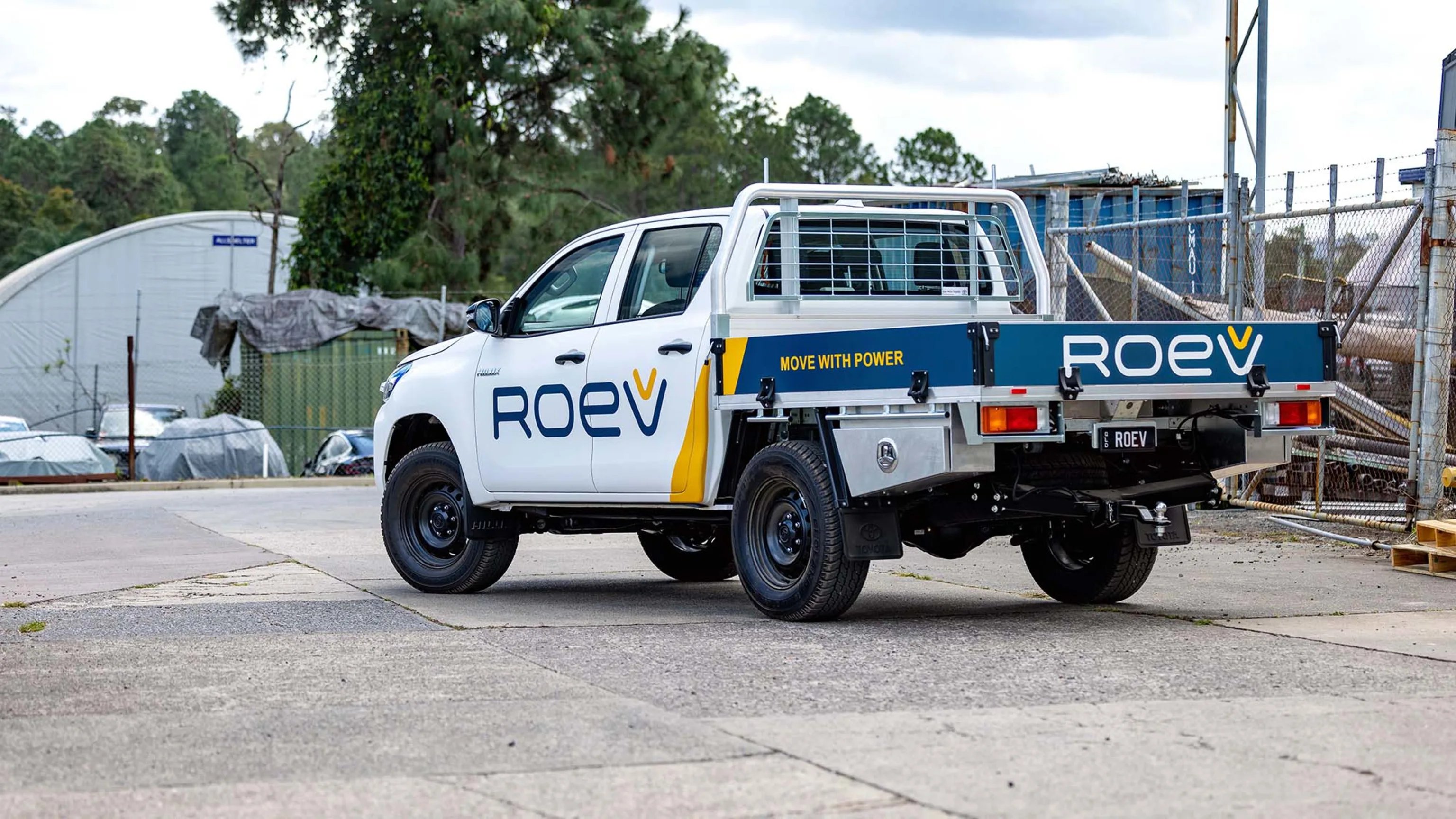If you want an all-electric ute in Australia there’s currently only one OEM option, the LDV eT60, which starts at $92,990 before on-road costs. Given that the Ford Ranger & Toyota HiLux are Australia’s two top-selling cars, it’s not surprising that Brisbane-based startup ROEV will bring two all-electric conversion options to market (initially for fleet owners only) in 2023.
Existing owners of all body styles of Ranger and HiLux spanning 2016 to 2022, and 4×2 or 4×4 variants, will have the choice of either a standard or extended range battery pack starting from $47,990.
From a sustainability standpoint, it’s a much-needed initiative but it’s also a fair chunk of change, especially given that the older the model is, the pricier the ICE to EV retrofit gets. Yes, it prolongs the life of the vehicles and takes another ICE vehicle off the road but it also means owners must ultimately decide on upgrading to a newer, safer, better-equipped, under-warranty vehicle or retaining an older donor vehicle with the EV upgrade.
RELATED: The A-Z Glossary Of Electric Vehicle Buzzwords You Need To Know

ROEV’s (Renewable Optimised Electric Vehicles) standard-range battery pack is a 64kWh unit offering a claimed range of up to 240km on a full charge. It’s priced from $47,990 to $51,990, depending on the age and drivetrain, for the conversion. The large extended-range battery pack is 96kWh in capacity with a claimed driving range of up to 360km, costing $53,990 to $57,990.
Both options can be recharged at up to 11kW AC and 80kW DC using the standard Type 2/CCS2 charging connector and are capable of vehicle-to-load (V2L) for using the large battery packs as a mobile power station to power tools and charge devices via a 240-volt, 20-amp socket. Power, torque, and towing figures are still being finalised.
Conversion prices are outlined below (excluding the donor car*).
| 4×2 MY20-22 | $47,990 | $53,990 |
|---|---|---|
| 4×2 MY16-19 | $48,990 | $54,990 |
| 4×4 MY20-22 | $50,990 | $56,990 |
| 4×4 MY16-19 | $51,990 | $57,990 |

This is the sort of initiative the government needs to rally behind, subsidising the cost for owners and getting a huge portion of existing, on-road vehicles, electrified to lower C02 emissions. Without some form of subsidy, the price will be a substantial barrier to sustainable entry.
ROEV has committed to converting 1000 vehicles in the first 12 months, with plans to make the conversion kid available to the wider public.
















